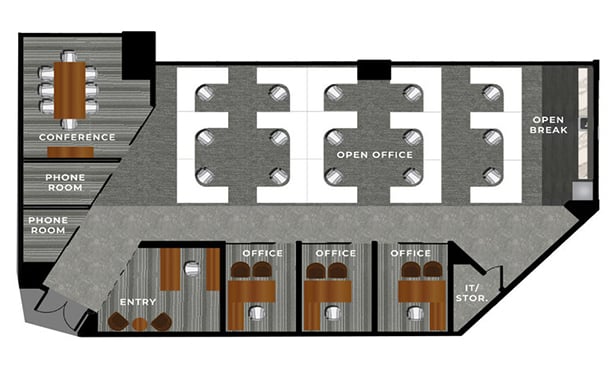IRVING, TX-Tuesday morning's session at RealShare Student Housing focused on issues ranging from capital allocation to construction. In the panel entitled "Industry Leaders: The View from the Top," those topics were important, as were current preleasing figures (rents are increasing by around 2% for the 2013-2014 school year) and tech issues (which probably, to no one's surprise, continue to be hugely important).
But the topic--covered in depth before roughly 500 attendees--kept returning to two themes: Concerns about overbuildings and the search for value by both parents and students.
The RealShare Conference Series is produced by ALM's Real Estate Media Group, which also publishes GlobeSt.com and Real Estate Forum.
The panel, moderated Peak Campus Communities president Bob Clark, pointed out some obvious factors; for example, student housing trends can vary from market to market. However, when it came to value add factors and potential overbuilding, the panelists seemed to be on the same page.
On the value side, most were in agreement that students and parents alike are continue seeking out the best value. This means the properties with higher rents are not going to be as popular as they once were.
"There is a finite group that can afford $6,000 to $10,000 a year for housing, and then an additional $6,000 to $10,000 a year for tuition," noted Albert Rabil, managing partner and CEO with Kayne Anderson. Added Preiss Co. founder and CEO Donna Preiss: "Millennials are more frugal. They want nice things, but aren't interested in spending as much money for them."
And speaking of spending money, the panelists were quick to point out that the hysteria over student loan debt is overblown. Not that it doesn't exist, but it's not as bad across all sectors of education.
David Adelman, president of Campus Apartments pointed out that huge amounts of debt were more a factor of graduates rather than undergraduates. "I get this on every panel," he noted. "It's important we peel back the onion; that we get the real information out there."
Bill Bayless, president and CEO of American Campus Communities continued along that same vein, noting that 50% of undergraduate students graduating do so with absolutely no debt. "Others might have $24,000 in debt," he continued. "Basically, the public, four-year, land-grant institutions are still a bargain."
This doesn't mean, however, that developers needs to dive into these markets and start building student housing willy-nilly. The panelists pointed out that there seems to be a lot of that going on already. "There is so much allocated capital when it comes to value-add and core product," observed Peter Katz, executive director of IPA. "There's a clear sense that things are overheated." Though the sector's performance continues to be strong, "we're seeing product being built that maybe shouldn't be," he commented. "Lenders have short memories, and this will continue to be a concern."
The experts also agreed that the areas suffering from overbuilding these days are Statesboro, GA (home of Georgia Southern University) and College Station, TX (where Texas A&M University is situated). But Adelman pointed out that oversupply isn't something that's incremental – rather, it seems to come online all at once. Given Statesboro's development pipeline, "we're going to see some pain there," he predicted.
Want to continue reading?
Become a Free ALM Digital Reader.
Once you are an ALM Digital Member, you’ll receive:
- Breaking commercial real estate news and analysis, on-site and via our newsletters and custom alerts
- Educational webcasts, white papers, and ebooks from industry thought leaders
- Critical coverage of the property casualty insurance and financial advisory markets on our other ALM sites, PropertyCasualty360 and ThinkAdvisor
Already have an account? Sign In Now
*May exclude premium content© 2024 ALM Global, LLC, All Rights Reserved. Request academic re-use from www.copyright.com. All other uses, submit a request to [email protected]. For more information visit Asset & Logo Licensing.








